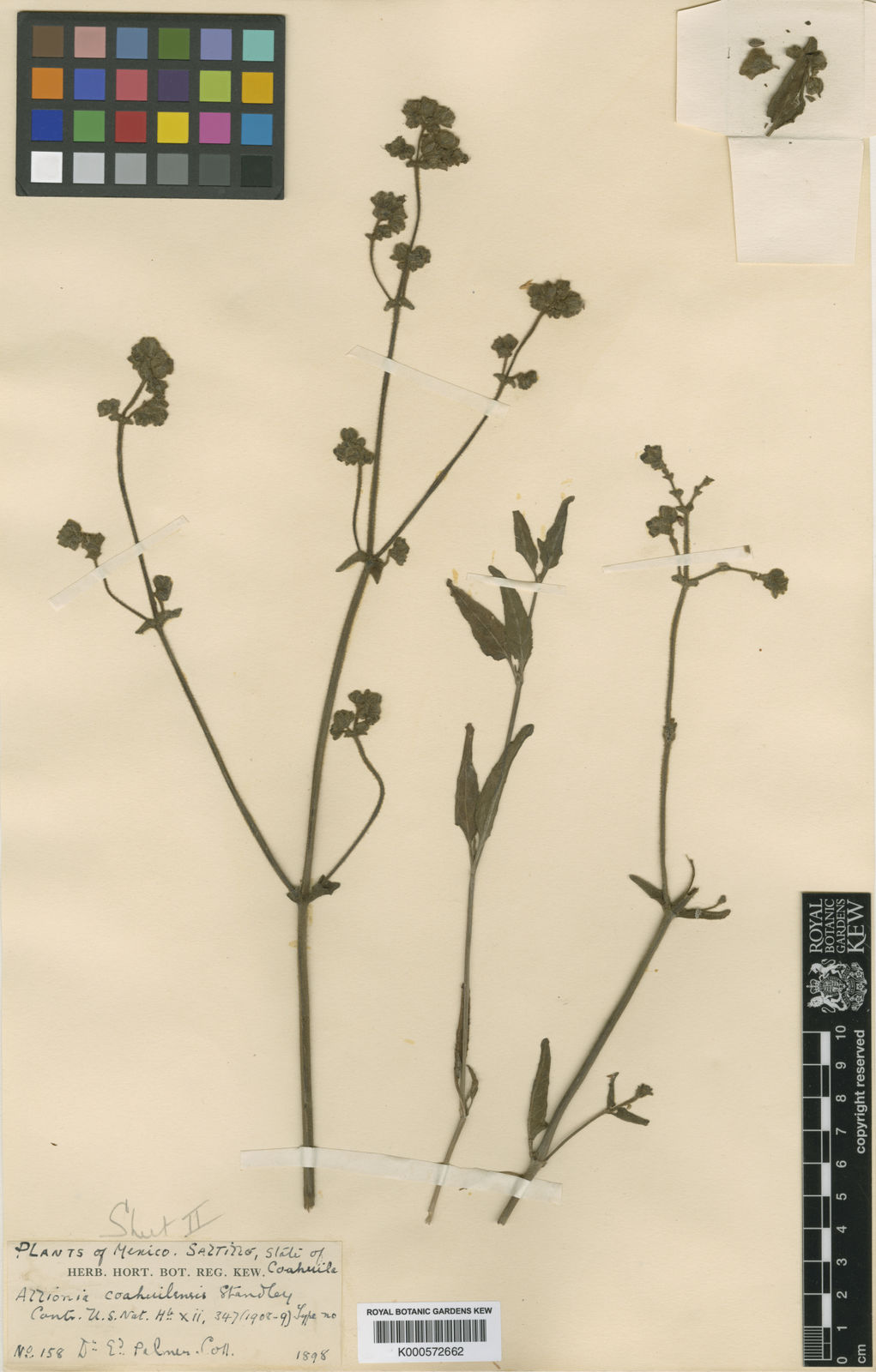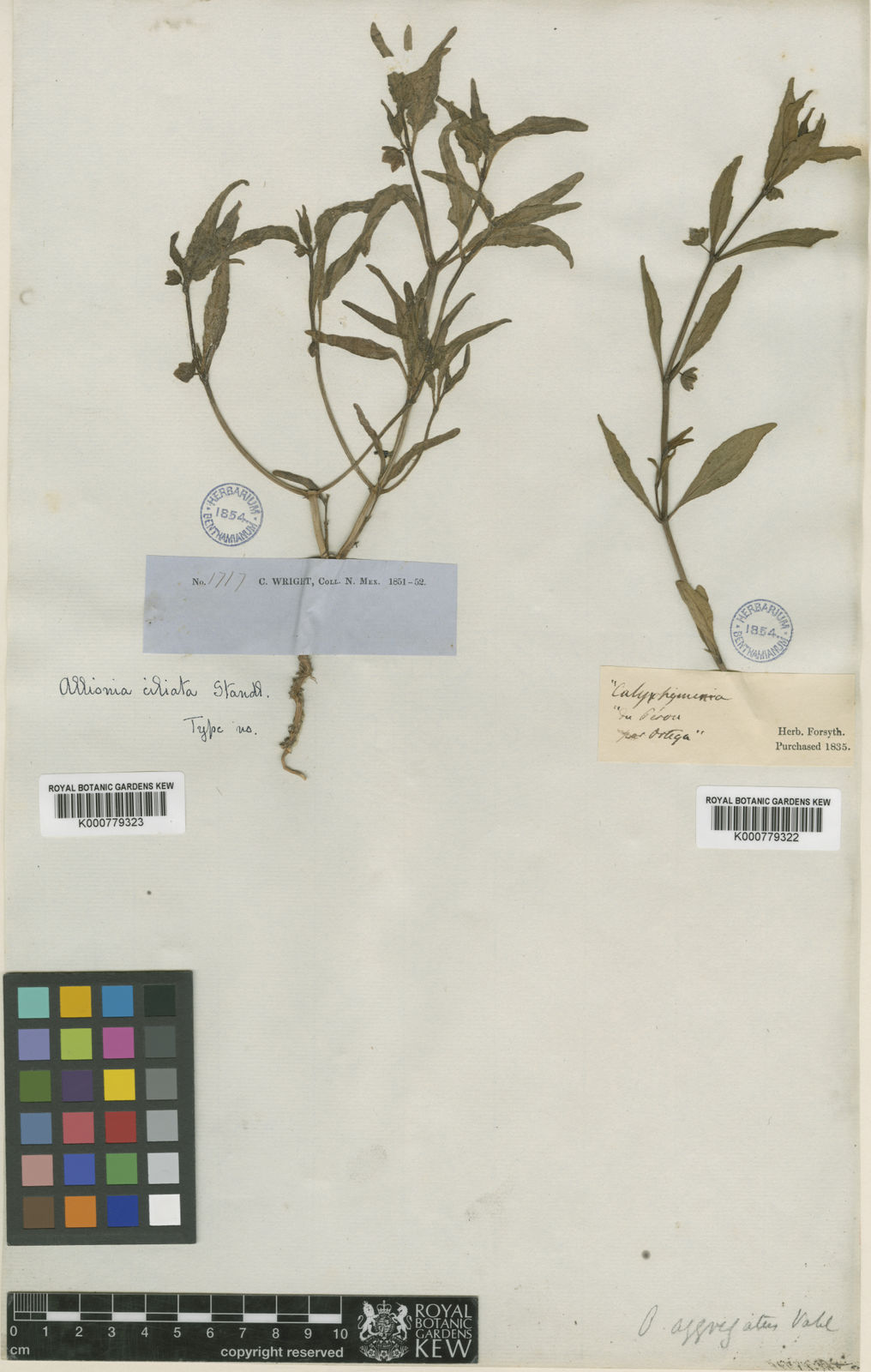Family: Nyctaginaceae
Author: (Walter) Heimerl
Bibliography: Annuaire Conserv. Jard. Bot. Genève 5: 182 (1901)
Year: 1901
Status: accepted
Rank: species
Genus: Mirabilis
Vegetable: False
Observations: Canada to Mexico
Description
The plant commonly known as White four o’clock, scientifically named Mirabilis albida, belongs to the family Nyctaginaceae. This fascinating plant, described by the botanist Heimerl in the early 20th century and documented in the Annuaire Conserv. Jard. Bot. Genève in 1901, has drawn attention due to its remarkable characteristics and widespread habitat.
Mirabilis albida is notably observed across a vast region stretching from Canada through to Mexico, showcasing a remarkable adaptability to different climates and terrains. The White four o’clock is a perennial herb that generally blooms in the late afternoon or early evening, hence its common name. This nocturnal flowering pattern is well-suited to its natural environments, allowing it to avoid the heat of midday and to be more accessible to nocturnal pollinators.
The plant bears clusters of small, tubular flowers that exude a subtle, pleasing fragrance, often contributing to its popularity among gardeners and plant enthusiasts. The blossoms range in color from almost pure white to faint shades of pink, and they typically close by the following morning.
In its natural habitat, Mirabilis albida can be found in meadows, grasslands, and along roadsides, where it contributes to the biodiversity and ecological balance. Its root system is deep and robust, enabling it to thrive in various soil conditions and to withstand periods of drought.
For those interested in cultivating White four o’clock, it is essential to replicate its natural conditions as much as possible. It thrives best in well-drained soil and in areas with ample sunlight. While relatively low-maintenance, regular watering during dry spells can help ensure robust growth and abundant flowering.
Mirabilis albida not only adds beauty to natural landscapes and gardens but also plays a role in traditional medicine and herbal remedies, where different parts of the plant have been used historically for medicinal purposes.
The widespread distribution and adaptability of White four o’clock make it an excellent subject for studies in plant ecology and environmental biology, providing insights into the resilience and versatility of plant species across diverse environments.
Common Names
Eng: mountain four-o’clock, white four o’clock, white four-o’clock, hairy four-o’clock, hairy umbrellawort, pale four-o’clock, pale umbrellawort
Fra: nyctage hirsute
En: White four o’clock, Prairie Four-o’clock, WHITE FOUR-O’CLOCK, WHITE FOUROCLOCK, Mountain four o’clock, Mountain four-o’clock, Hairy four-o’clock, Hairy umbrellawort, Pale four-o’clock, Pale umbrellawort
Fr: Nyctage hirsute
Synonyms
- Oxybaphus ciliatifolius (Weath.)
- Allionia pratensis (Standl.)
- Allionia hirsuta var. rotundifolia (Lunell)
- Mirabilis pseudaggregata var. eglandulosa (Heimerl)
- Allionia grayana (Standl.)
- Mirabilis pumila ((Standl.) Standl.)
- Allionia pauciflora ((Buckley) Standl.)
- Allionia lanceolata (Rydb.)
- Allionia pilosa ((Nutt.) Rydb.)
- Oxybaphus coahuilensis ((Standl.) Weath.)
- Oxybaphus nyctagineus var. pilosus ((Nutt.) A.Gray)
- Mirabilis grayana ((Standl.) Standl.)
- Allionia coahuilensis (Standl.)
- Oxybaphus hirsutus ((Pursh) Sweet)
- Oxybaphus albidus ((Walter) Sweet)
- Allionia hirsuta (Pursh)
- Allionia aggregata var. hirsuta ((Pursh) Farw.)
- Allionia albida (Walter)
- Allionia pumila (Standl.)
- Mirabilis eutricha (Shinners)
- Allionia pseudaggregata var. subhirsuta ((Heimerl) Standl.)
- Oxybaphus pseudaggregatus ((Heimerl) Weath.)
- Allionia oblongifolia ((A.Gray) Standl.)
- Mirabilis albida f. uniflora (Heimerl)
- Mirabilis ciliata ((Standl.) Standl.)
- Oxybaphus hirsutus var. integrifolius (Choisy)
- Allionia hirsuta subsp. coloradoensis (Standl.)
- Mirabilis nyctaginea var. albida ((Walter) Heimerl)
- Allionia bracteata (Rydb.)
- Mirabilis pseudaggregata (Heimerl)
- Mirabilis pseudaggregata var. subhirsuta (Heimerl)
- Mirabilis coahuilensis ((Standl.) Standl.)
- Mirabilis hirsuta ((Pursh) MacMill.)
- Allionia lanceolata var. uniflora ((Heimerl) Standl.)
- Oxybaphus lanceolatus ((Rydb.) Standl.)
- Oxybaphus nyctagineus var. oblongifolius (A.Gray)
- Mirabilis lanceolata ((Rydb.) Standl.)
- Oxybaphus pauciflorus (Buckley)
- Calymenia pilosa (Nutt.)
- Oxybaphus pilosus ((Nutt.) Sweet)
- Calymenia hirsuta ((Pursh) Nutt.)
- Allionia ciliata (Standl.)
- Allionia lanceolata subsp. uniflora ((Heimerl) Standl.)
- Mirabilis pauciflora ((Buckley) Standl.)
- Allionia pseudaggregata ((Heimerl) Standl.)
- Oxybaphus pumilus ((Standl.) Standl.)
- Mirabilis ciliatifolia ((Weath.) Standl.)
- Mirabilis albida var. lata (Shinners)
- Oxybaphus grayanus ((Standl.) Standl.)
- Mirabilis dumetorum (Shinners)
- Mirabilis oblongifolia (Heimerl)
- Oxybaphus pratensis ((Standl.) Weath.)
Distribution
- Alabama (native)
- Alberta (native)
- Arizona (native)
- Arkansas (native)
- British Columbia (native)
- California (native)
- Colorado (native)
- Connecticut (native)
- Georgia (native)
- Illinois (native)
- Indiana (native)
- Iowa (native)
- Kansas (native)
- Kentucky (native)
- Louisiana (native)
- Maine (native)
- Manitoba (native)
- Masachusettes (native)
- Mexico Central (native)
- Mexico Gulf (native)
- Mexico Northeast (native)
- Mexico Northwest (native)
- Mexico Southwest (native)
- Michigan (native)
- Minnesota (native)
- Mississippi (native)
- Missouri (native)
- Nebraska (native)
- Nevada (native)
- New Jersey (native)
- New Mexico (native)
- New York (native)
- North Dakota (native)
- Ohio (native)
- Oklahoma (native)
- Ontario (native)
- Pennsylvania (native)
- Québec (native)
- Saskatchewan (native)
- South Carolina (native)
- South Dakota (native)
- Tennessee (native)
- Texas (native)
- Utah (native)
- Vermont (native)
- Wisconsin (native)
- Wyoming (native)
Additional Images
Flower
Taken Sep 13, 2022 by T Trista (cc-by-sa)
Taken Sep 13, 2022 by T Trista (cc-by-sa)
Taken Aug 11, 2022 by Lorenzo Pelloni (cc-by-sa)
Taken Sep 16, 2014 by EOL − Linda Jo Conn (cc-by-nc)
Taken Aug 11, 2021 by linze rice (cc-by-sa)
Leaf
Taken Sep 22, 2020 by Stephany Stephany Vanochten (cc-by-sa)
Taken Sep 13, 2022 by T Trista (cc-by-sa)
Taken Jun 26, 2022 by maxinlght (cc-by-sa)
Taken Aug 11, 2022 by Lorenzo Pelloni (cc-by-sa)
Taken Jun 24, 2020 by Helen613 (cc-by-sa)
Habit
Taken Nov 1, 2013 by EOL − Sam Kieschnick (cc-by-nc)
Taken Oct 8, 2015 by EOL − Judith Lopez Sikora (cc-by-nc)
Taken Oct 13, 2015 by EOL − andy (cc-by-nc)
Taken Nov 2, 2015 by EOL − Sam Kieschnick (cc-by-nc)
Taken Nov 3, 2015 by EOL − Sam Kieschnick (cc-by-nc)
Fruit
Taken Oct 13, 2015 by EOL − andy (cc-by-nc)

© copyright of the Board of Trustees of the Royal Botanic Gardens, Kew.

© copyright of the Board of Trustees of the Royal Botanic Gardens, Kew.

© copyright of the Board of Trustees of the Royal Botanic Gardens, Kew.
Sources
- WFO (No URL)
- IPNI (No URL)
- POWO (http://powo.science.kew.org/taxon/urn:lsid:ipni.org:names:162535-2)
- GBIF (https://www.gbif.org/species/3086179)
- PlantNet (https://identify.plantnet.org/species/the-plant-list/Mirabilis albida (Walter) Heimerl)
Specifications
Growth habit>: Forb/herb, Subshrub
















